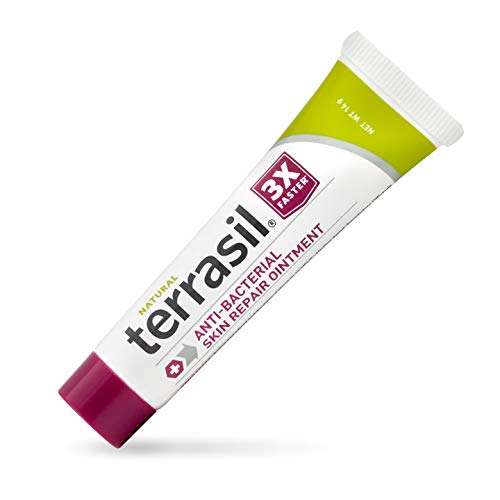Can Folliculitis Be Prevented
In many cases, you can work to prevent folliculitis or manage it by changing your lifestyle habits. Folliculitis infections usually involve bacteria and yeast entering your hair follicles. By changing some parts of your normal self-care routine, you can limit the amount of infectious material in your hair follicles.
A few tips for preventing folliculitis include:
- Keeping your skin clean.
- Limiting shaving.
- Checking the chemical disinfectant levels of hot tubs and heated pools before using them. The warmer a pool or hot tub, the faster the chemicals will fade away making them less effective against bacteria.
- Washing off and removing your swimsuit when you get out of a hot tub or pool.
- Wearing breathable clothing to keep sweat from getting trapped between your clothes and skin.
What Is Pityrosporum Folliculitis
Pityrosporum folliculitis, also known as Melassezia folliculitis, is a common skin condition that many people often mistake for acne. This is mostly because of the way it presents itself on the skin. When youâre living with pityrosporum folliculitis, the condition will look nearly identical to an acne breakout. As a result, you might be trying to treat pityrosporum folliculitis like you would treat acne, which just wonât work. This condition occurs when a specific type of yeast called Malassezia, which naturally occurs on the skin, gets into your hair follicles and causes infections. And, as stated above, traditional acne treatments wonât make pityrosporum folliculitis go away because they donât treat the yeast infection that causes it. Fortunately, there are two ways you can tell the difference between pityrosporum folliculitis and acne. First, pityrosporum folliculitis lacks comedones that are a telltale sign of acne. In addition, pityrosporum folliculitis is typically a very itchy condition, whereas acne is not. In addition, youâre more likely to have conditions like dandruff if youâre living with pityrosporum folliculitis. But how do you get rid of this acne-like condition?
The Best Way To Get Rid Of Ingrown Hairs Is To Prevent Them From Popping Up In The First Place
As important as it is to get rid of this ingrown hair, its also crucial to start thinking about how to prevent the next one.
For instance, if you shave, make sure you always use some sort of lubrication and be sure to clean the blade after every stroke. Basically, do whatever you can to minimize the need to pass over the hair more than once, because every time you pass over it you increase the chances of developing an ingrown hair, SELF explained previously.
Also, remember that shaving is just one part of a healthy hair removal routineideally you should be gently exfoliating before shaving and moisturizing afterward to keep your skin hydrated and ingrown-free.
If youre someone who finds yourself getting ingrown hairs frequently, it may be worth looking into an electric trimmer or, possibly, laser hair removal to make the process easier.
Related:
You May Like: Can You Get A Wax With A Yeast Infection
You May Like: Best Oral Antibiotic For Stye
Steroid Lotions Creams Soaps
For mild infections, your doctor may prescribe steroid lotions, creams, and soaps. A medicated shampoo may also be prescribed to treat folliculitis of the scalp or beard.
While choosing a shampoo, it is advisable to pick an anti-dandruff formula that contains ingredients such as tea tree oil, ketoconazole, or ciclopirox.
Applying Cortisone cream or Neosporin ointment may also provide some relief.
You May Like: Ear Infection Viral Or Bacterial
What Is Folliculitis What Are The Symptoms And Signs

Folliculitis is an inflammatory condition affecting hair follicles. It appears as a small red tender bump occasionally surmounted with dot of pus surrounding a hair. Older lesions that have lost the pus appear as red bumps surrounding the opening of the follicle absent the hair. One to hundreds of follicles can be affected anywhere that hair is present. Actually, acne vulgaris, the facial rash that teenagers develop, is a type of folliculitis.
Recommended Reading: What To Put On Infected Tooth
Don’t Miss: Best Antibiotic For Cat Bite
Infected Ingrown Hair Follicle
In most cases, they form red spots, which usually becomes infected and turn into painful, pus-filled sores. Ingrown hairs can be itchy and annoying, but after sometime they disappear on their own.Anyone can get ingrown hairs, mostly they tend to be more of a problem in people with coarse or curly hair.
What Are Common Types Of Folliculitis
Acne vulgaris
Acne vulgaris occurs almost universally in teenagers at puberty. Acne vulgaris is usually not considered a folliculitis, but it specifically affects the hair follicles of the face, chest, and back.
Drug-induced folliculitis
Systemically administered or topically applied steroids are a well-known cause of folliculitis. Certain anti-cancer drugs produce a form of folliculitis.
Cutting oil folliculitis
Machinists exposed to insoluble cutting oils that are used to decrease the friction while machining metal parts can develop a folliculitis on the exposed skin.
Staphylococcal folliculitis
Staphylococci are bacteria that commonly inhabit the skin. One species, S. aureus, is a frequent cause of folliculitis. Occasionally, this organism may be insensitive to a number of commonly used antibiotics . In this situation, it is very important that a culture of the organism with sensitivities be performed so the ideal antibiotic is selected to treat the infection.
Fungal folliculitis
Folliculitis from a fungus infection can occur on the face and on the lower legs. It is often exacerbated by shaving. It can also occur on the trunk .
Viral folliculitis
Folliculitis from a virus infection often affects the face and is from herpes simplex virus affecting the lips, commonly known as a cold sore.
Scarring scalp folliculitis
There are a variety of rare, inflammatory, scarring types of folliculitis that can result in permanent hair loss.
Eosinophilic folliculitis
You May Like: How Can You Treat An Ear Infection Without Antibiotics
What Is Razor Burn Folliculitis
Razor-burn folliculitis is very common on the male neck and women’s legs and is caused by shaving. Repeated passes by the razor produces tiny cuts that allow bacteria to enter the skin and invade the deeper hair follicles. Additionally, excessively close shaving may cause trapping of small hairs beneath the skin surface, causing more inflammation. Occasionally waxing can produce folliculitis.
Treatment involves stopping shaving with a razor for a few days to a few weeks and using antibacterial washes and topical antibiotics. Additional treatments include laser hair removal, electrolysis, electric razors, or cream depilatories like Neet or Nair. Frequently, shaving less vigorously and leaving a small bit of stubble is advisable.
What Will Happen If An Ingrown Hair Goes Untreated
In most cases, ingrown hairs usually heal themselves within one to two weeks with only minor irritation, as they eventually release from your skin as they grow longer. Infections can develop around the ingrown hair, causing pus formation, discoloration and pain, though. If you see signs of infection, you should visit your healthcare provider.
You May Like: Does An Ear Infection Go Away On Its Own
You May Like: What Antibiotic Is Used For Swollen Lymph Nodes
What Is The Best Antibiotic For Folliculitis
Looking for an antibiotic to treat folliculitis? Folliculitis causes itching and tiny red bumps near where the hair grows that signals an infected hair follicle. When the hair follicle becomes infected, it could either be a fungal or a bacterial infection. While the condition isn’t too serious, an untreated infection can leave you with permanent damage to the hair follicle. Most cases clear on their own in a few days, but if it doesn’t clear up, you need to see your doctor. This article explains the different types of antibiotics used to treat folliculitis and how they are used.
What Is Infected Ingrown Hair
An ingrown hair is the one that grows back into the skin in place of stemming up from it.
At times, dead skin clogs a hair follicle and this forces hair to grow opposite or sideways under the skin rather than out and up. It can as well happen when you cut curly hair too short, this sharp end of the hair may pierce the skin leading to ingrown hair and infection along with it.
Recommended Reading: Antibiotics Used To Cure Chlamydia
Description Of The Intervention
Various interventions have been suggested for treating folliculitis , including local application of moist heat, phototherapy, antiseptic agents, antibiotics alone, or combination therapy. Treatment of fluctuating boils often requires drainage of the lesion, and for severe infections systemic antibiotics should be given until the signs of inflammation have regressed.
Local moist heat around 38°C to 40°C applied for 15 to 20 minutes may increase local blood flow, may establish drainage, and has proved helpful in treatment of newly emerged folliculitis or boils . No adverse effects of local moist heat are known .
Topical antibiotics may be used in treating folliculitis and boils when the number of lesions is limited, or they may be used in combination with other interventions, for example, incision and drainage . Available preparations include fusidic acid 2% cream twice daily , clindamycin 2% gel twice daily, and mupirocin 2% ointment applied two to three times daily . These drugs are topically applied over the lesion. Topical antibiotics may cause contact dermatitis, dryness, or pruritus over the applied area. However, these adverse events are usually minor . No major drugdrug interactions between these topical antibiotics and other medications are known .
Facts You Should Know About Folliculitis

- Folliculitis is a very common, benign skin disorder that appears as pinpoint red bumps, each one involving a hair follicle, occasionally with a small dot of pus at the top.
- Folliculitis affects people of all ages, from babies to seniors.
- The numerous smooth little tender red bumps involve the hair follicles commonly on the face, scalp, chest, back, buttocks, and legs.
- Folliculitis is often seen in otherwise healthy people it’s easily curable in most cases, and frequently clears on its own without treatment although it may require ongoing maintenance therapy.
- Antibacterial over-the-counter medications containing benzoyl peroxide are often used to treat folliculitis, but resistant cases may need antibiotic pills to clear the skin.
- Good skin hygiene and proper shaving techniques have been shown to prevent folliculitis.
Also Check: Will Doctors Prescribe Antibiotics Over Phone
How The Intervention Might Work
As mentioned above, bacterial folliculitis and boils occur as inflammation of the follicle and perifollicular tissue caused by bacterial infection. Therefore, antibacterial, antiseptic, and antiinflammatory interventions may be used for treatment.
Topical antibiotics, for example, clindamycin, aminoglycosides, and fusidic acid, directly kill or inhibit pathogenic bacteria within the follicle, avoiding further tissue damage by these pathogens .
Therapeutic effects of antiseptic agents are attributed to the killing of bacteria that cause folliculitis and boils, for example, S aureus . Benzoyl peroxide is an antiseptic that confers not only antibacterial effects but also keratolytic effects, which cause the skin to dry and peel .
Systemic antibiotics can directly inhibit or kill the pathogenic bacteria causing folliculitis and boils. When bacterial cultures are available, systemic antibiotics can be administered according to the pathogen identified .
UltravioletB radiation, primarily affecting the epidermis and the superficial dermis, is absorbed by endogenous chromophobes, such as nuclear DNA, which initiates a cascade of immunomodulatory effects . For its antiinflammatory effects, phototherapy has been proposed as a treatment option for folliculitis .
Folliculitis: Treatment Causes And Symptoms
Folliculitis is a common skin condition commonly triggered by bacterial or fungal infections. The resulting rash of raised bumps can be itchy and painful, but it is treatable with topical medications. There are several types of folliculitis, the difference is determined by the cause of the infection or inflammation.
Basic skin hygiene practices can help lower your risk of developing folliculitis, but if the condition does appear, its helpful to know how to recognize it and how best to respond.
Folliculitis is an inflammation or infection that can affect one or more hair follicles. Your hair follicles are the small cavities that surround the roots of your hair.
Folliculitis can occur on your skin wherever hair grows, including your scalp. Its most likely to occur on your thighs, buttocks, neck, and armpits places where friction is common. It usually appears as small bumps.
It may look like acne or a rash and can be isolated to one hair follicle or affect many.It can be acute or chronic .
Folliculitis is relatively common. People who have obesity are more likely to experience it.
Folliculitis is usually minor and goes away on its own without treatment. If you have skin irritation thats accompanied by a fever, a spreading rash, or pus-filled and smelly bumps, seek medical help.
To treat acute folliculitis thats severe or slow to heal, your doctor may recommend over-the-counter or prescription medications. For example, they may recommend:
Hot tub folliculitis
You May Like: Antibiotics Used For Ear Infection
What Are The Benefits And Risks Of Different Treatments For Bacterial Folliculitis And Boils
Why is this question important?
Bacterial folliculitis is an inflammation of the tiny pockets in our skin from which hairs grow . It occurs when bacteria infect hair follicles. Bacterial folliculitis typically causes red swelling, with or without a small blister that contains pus.
Without treatment, bacterial folliculitis may progress to hard and painful lumps filled with pus, known as boils. These cover several hair follicles, and affect the skin around them.
Bacterial folliculitis and boils affect people worldwide, and have an important negative impact on quality of life. Infections typically:
– cause unsightly infections on parts of the body visible to others or
– develop where skin rubs, causing discomfort and pain .
A range of treatment options for bacterial folliculitis and boils is available. These include:
– antibiotics . These can be applied to part of the body in the form of creams or they can be taken by mouth or given as injections, to treat the whole body
– antiseptics
– light therapy and
– surgery, for example, doctors may make a small cut in the skin to allow pus to drain out.
To find out which treatments work best for bacterial folliculitis and boils, we reviewed the evidence from research studies.
How did we identify and evaluate the evidence?
What did we find?
The studies compared:
– different oral antibiotics
– different topical antibiotics
– different treatments for wound care after boil incision
– different traditional Chinese medicines
Reasons For The Development Of Pathology
In 70% of cases, inflammation of the hair follicles develops under the influence of staphylococci and streptococci. Somewhat less often, Pseudomonas, causative agents of syphilis and gonorrhea, or fungi of the Candida species become the causes of the disease. Molluscum contagiosum and herpes zoster viruses are less common causes of folliculitis. About 10% of clinically recorded cases of inflammation of the hair follicles are manifested against the background of the activity of parasitic mites Demodex folliculorum and Demodex brevis.
Pathogens enter the follicles through damaged areas: scratches and abrasions. Persons suffering from itchy dermatitis and excessive sweating are susceptible to infection. The weakening of the patient’s immunity leads to the penetration of the infection into the hair follicles. For this reason, dermatologists recommend preventive measures for men and women diagnosed with diabetes and chronic infections. Often the disease manifests itself in HIV-infected people and patients taking immunosuppressants.
You May Like: Do Antibiotics Cancel Out Plan B
How Are Folliculitis Boils And Carbuncles Diagnosed
Diagnosis of folliculitis, boils, and carbuncles are made by your healthcare provider after a thorough medical history and physical exam. After examining the lesions, your healthcare provider may culture the wounds . He or she does this to help confirm the diagnosis and to help in selecting the best treatment.
Also Check: How To Clear Up Sinus Infection Without Antibiotics
Symptoms Of Infected Hair Follicle
Infected hair follicle otherwise known as folliculitis comes with some symptoms amongst which are:
- Clusters of small white-headed pimples or red bumps appearing around hair follicles.
- Red, inflamed skin
- A large swollen mass or lump
- Burning or itching of the skin
- Blisters filled with pus, which breaks open and crust over
- Pimples which drain pus, blood, or both
- Tiny pustules which may itch initially
- Furuncles develop yellow or green pus which can be expressed with a core plug of dead tissues.Carbuncles can present with fever and swelling of the lymph nodes .
Read Also: Any Over The Counter Antibiotics
How Can Folliculitis Be Prevented
Keeping your skin clean, dry and free from abrasions or irritations can help to prevent folliculitis. Certain people are more prone to infections, such as people with diabetes. If you have a medical problem that makes you more likely to get infections, these precautions may be more important. Using antiseptic washes routinely is not generally recommended, as they can make the skin sore and dry. Keeping the skin moisturised can help protect it from damage. Take care when shaving , using a shaving gel, foam or soap to lubricate the blades across the skin to prevent nicks and cuts.
Most cases of folliculitis are not contagious but if you have been identified as carrying the S. aureus germ , this infection can occasionally be transferred to other people. This risk can be minimised by normal hygiene measures and laundering clothing, bed linens and towels on a hot wash. Do not share razors. You should also avoid sharing hot tubs and Jacuzzis® until the infection has been treated.
Infected Ingrown Hair Boil

Infected ingrown hair boil is a foul smell pus-filled bump that forms on an ingrown hair as a result of damaged hair follicle. The main cause of infection is staphylococcus bacteria which enters the body through cuts and scratches made by scratching, popping or plucking the ingrown hair.
Mild, moderate or severe cause of staph infection can be treated using oral, topical or injectable antibiotic. Seek medical attention for large recurring boils.
Also Check: Natural Antibiotics For Bronchial Infection